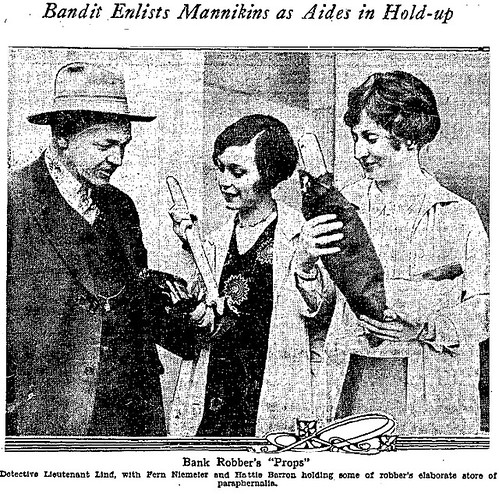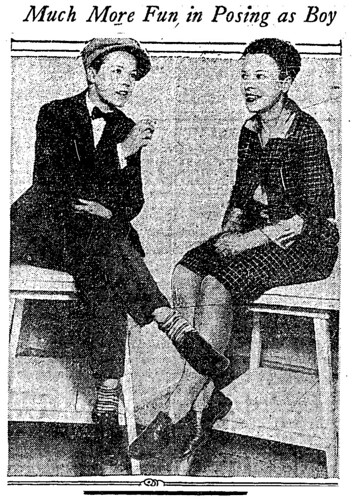The 8th Annual Festival of Film Noir is coming to the American Cinematheque at the Egyptian from April 12-May 2, and getting discount tix for the whole series is a fine reason to become a member. Each screening includes a film set in Los Angeles set against one in New York. What burg will be the winner in this battle of mood, nuance, betrayal and pain? I think you know where our bet is laid!
We’d like to especially pull your sleeve to the rare Leonard Maltin-introduced 35mm screening of He Walked By Night on April 22, based on the unbelievable-yet-true Erwin Walker case (more here)–as seen on our Halloween Horrors crime bus tour, where we share startling, little-known facts about the crime spree, graciously provided by Walker’s stepson. Sure, you can pick this public domain flick up on DVD at the 99 Cent Only Store, but you really want to see John Alton’s beautifully shot scenes of that L.A. River sewer escape bigger than life.
For more info on the Festival of Film Noir, please visit the series webpage. And do come by and say hello at the reception on opening night, April 12, when some of the 1947project gang will be in attendance to answer your questions about the upcoming Esotouric bus adventures, including the noir-heavy Raymond Chandler’s Los Angeles, and editor Denise Hamilton and contributors Jim Pascoe, Diana Wagman, Christopher Rice, Neal Pollack, Patt Morrison, Emory Holmes II, Gary Phillips, Lienna Silver and Naomi Hirahara will be on hand with copies of the brand new Los Angeles Noir anthology. This is the second of a slew of Los Angeles Noir events 1947project folks will be attending.



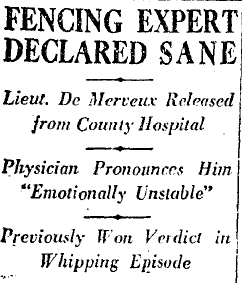 Today, fencing master and underwear salesman Lt. Gerard De Mereux was vindicated for the second time in the space of a week. Last week, De Mereux was awarded $500 in damages in a suit against Hollywood director J. Stuart Blackton, who was accused of beating De Mereux with a horsewhip. De Mereux had been living as a guest in Blackton’s home, giving fencing and corrective gymnastics lessons to Blackton’s daughters.
Today, fencing master and underwear salesman Lt. Gerard De Mereux was vindicated for the second time in the space of a week. Last week, De Mereux was awarded $500 in damages in a suit against Hollywood director J. Stuart Blackton, who was accused of beating De Mereux with a horsewhip. De Mereux had been living as a guest in Blackton’s home, giving fencing and corrective gymnastics lessons to Blackton’s daughters.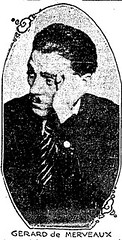

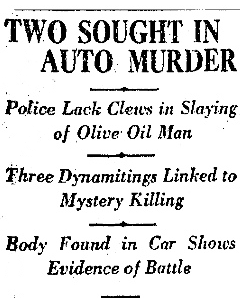 On this Spring day in 1927, investigating officers were pavement-pounding in the Italian neighborhoods, attempting to scare up information about the April Fool’s Day discovery of one murdered Antonio (Tony) Ferraro. But there was no talking to be had, and the crime scene revealed nothing in the way of tell-tale fingerprints or any such evidence, and so Tony Ferraro remains another unsolved Los Angeles gangland slaying.
On this Spring day in 1927, investigating officers were pavement-pounding in the Italian neighborhoods, attempting to scare up information about the April Fool’s Day discovery of one murdered Antonio (Tony) Ferraro. But there was no talking to be had, and the crime scene revealed nothing in the way of tell-tale fingerprints or any such evidence, and so Tony Ferraro remains another unsolved Los Angeles gangland slaying.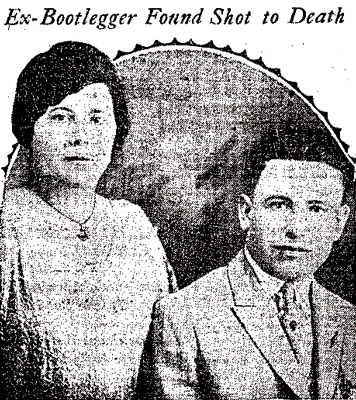 Robbery was not the motive, as Ferraro’s diamond ring, watch, money clip and olive oil were unmolested. Persons unknown entered Ferraro’s car, where he was beaten with a tire iron (his bruised hands indicating he put up a strong fight) and then shot in the head once with a .38 and twice with a .32. The body was then pulled from the front seat and lain across the olive oil in the back.
Robbery was not the motive, as Ferraro’s diamond ring, watch, money clip and olive oil were unmolested. Persons unknown entered Ferraro’s car, where he was beaten with a tire iron (his bruised hands indicating he put up a strong fight) and then shot in the head once with a .38 and twice with a .32. The body was then pulled from the front seat and lain across the olive oil in the back.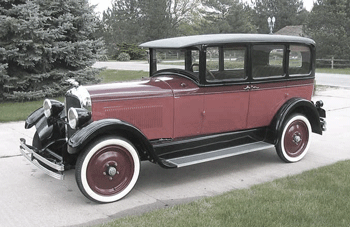 On April 5 the Times reported a rumor that Ferraro’s car had been seen the night of the 31st in
On April 5 the Times reported a rumor that Ferraro’s car had been seen the night of the 31st in 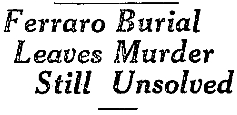




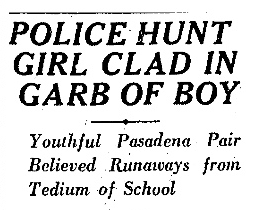 Fourteen year-old
Fourteen year-old 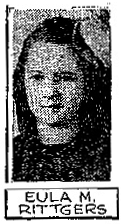 boy. Inside a church wastebasket was found the Eula’s hair, and persons conforming to the two young boys’ description were spotted in Eagle Rock. A fashionable bobbed ‘do meets a Joan of Arc act. Appropriately observant. Guess they were absent the day they covered Deuteronomy 22:5.
boy. Inside a church wastebasket was found the Eula’s hair, and persons conforming to the two young boys’ description were spotted in Eagle Rock. A fashionable bobbed ‘do meets a Joan of Arc act. Appropriately observant. Guess they were absent the day they covered Deuteronomy 22:5.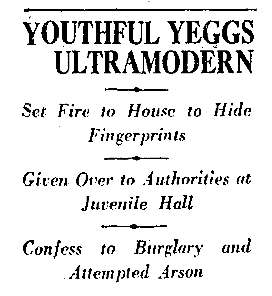 In yet more fifteen year-old news, or, that is to say, further news of fifteen year-olds, fifteen year-old
In yet more fifteen year-old news, or, that is to say, further news of fifteen year-olds, fifteen year-old 
